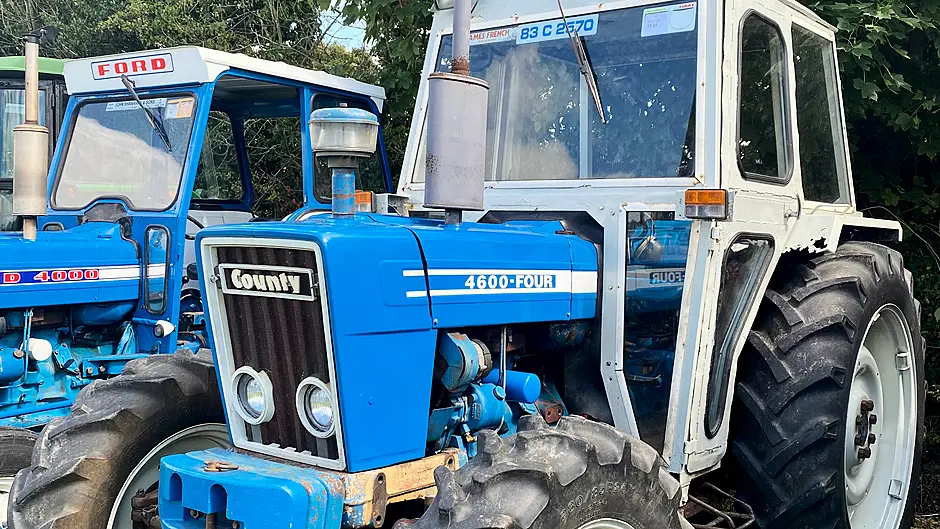THE County name is synonymous with equal-wheeled, high horse power, four-wheel drive tractors. Established in Fleet, Hampshire, England in 1929, the firm initially converted lorries, before moving to crawler tractors and ultimately equal-wheel four-wheel drive tractors.
These tractors started life as Ford skid units which were built upon by County who honed in on the market niche for their specialist four–wheel drive machines, with a large amount of tractors exported overseas.
Four-wheel drive was County’s speciality, with very few manufacturers offering the drive system as a factory option until the late 70s. County’s niche was – which to this day still is – equal wheel specialist tractors. However, County realised the growing interest in unequal wheel four-wheel drive systems as well as the market potential for increasing sales.
The benefits of developing such a tractor were two-fold. Firstly, it was a simpler and less costly system to produce in comparison to the twin-prop equal-wheel system. Secondly, it opened up a huge market of customers who ran small to medium sizes tractors, who wanted four-wheel drive but could not afford to compromise on manoeuvrability.
Based on the Ford 4000, the County 4000 Four was one of the company’s first unequal four-wheel drive tractors.
The unequal wheel venture proved quite successful, and when Ford released the 600 series of tractors, County followed suit with the 4600 Four, 6600 Four, 7600 Four and 7700 Four in 1975.
The County 4600 Four is powered by Fords 3.3l three cylinder engine producing 62hp.
While the constant mesh Ford 8F/2R gearbox is used, County fitted a heavier 13inch clutch disc to the tractor, replacing the original 11inch Ford unit.
County took the drive for the front axle by redesigning the half shaft to accommodate a transfer gearbox on the left hand side of the transmission case of the tractor.
Drive was taken via a prop-shaft which ran the length of the tractor to the front axle, which had a four -pinion differential, as well as power steering, and provided a 33-degree steering angle.
The four-wheel drive axle was engaged/disengaged via a pull/plunge type lever mounted on the floor below the handbrake. The 4600 could be specified with Fords Q-cab or with County’s own designed cab, most commonly painted in white, but also in blue.
The nose cone boldly displays the County name, as well as being cast into the front axle. County also offered wheel various wheel rim options in the form of fixed, adjustable or weighted.
• Contact Peter at [email protected] or see Instagram @flashphotoscork










